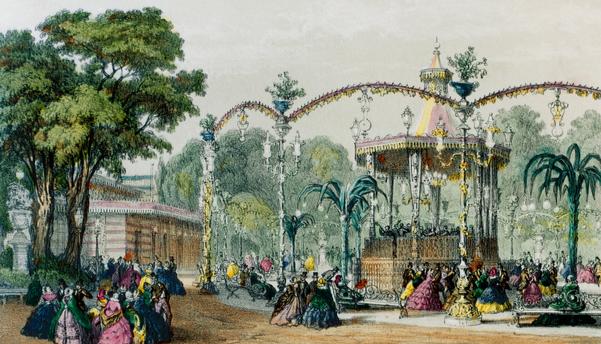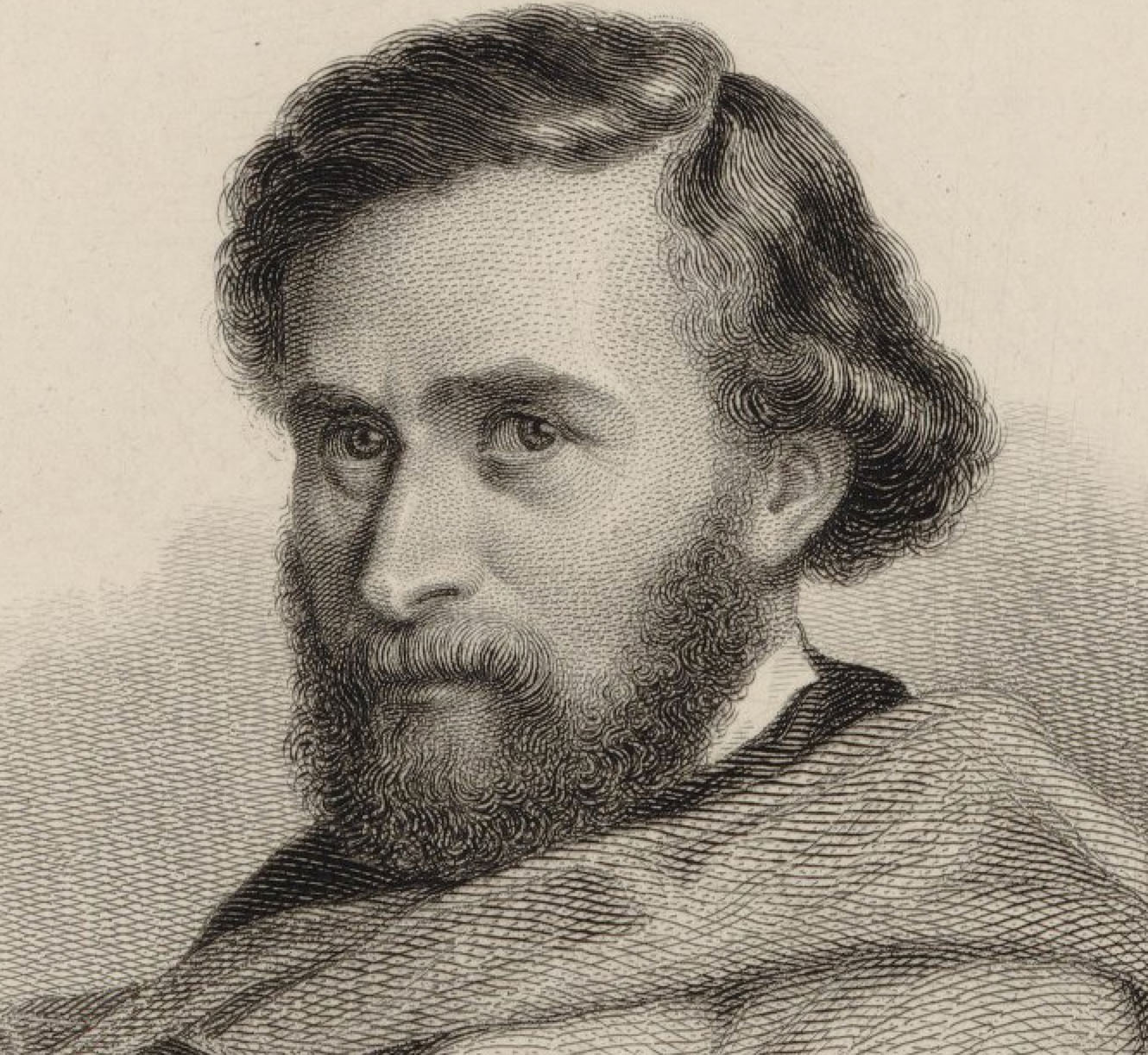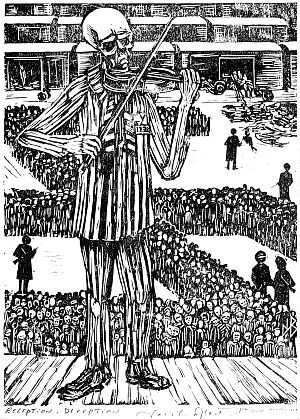A kinkajou is a small mammal native to Central and South America with nocturnal habits and related to raccoons.

The name of this cute little animal was used for a dance novelty in the late 1920s. An article of the Examiner in 1927 explained how to dance the Kinkajou: ‘You must sway the shoulders, tango like a sailor manipulating a gangway, and then change from one foot to the other as though in pain, lifting each foot well off the ground.’
While the dance originated in the 1927 Broadway musical Rio Rita, there was a serious disagreement in Paris on who created the original dance routine: the dance teacher Jean Mesnard, the beautiful Irvin Sisters or Albertina Rasch? In fact, all three of them contributed to the pseudo-craze.
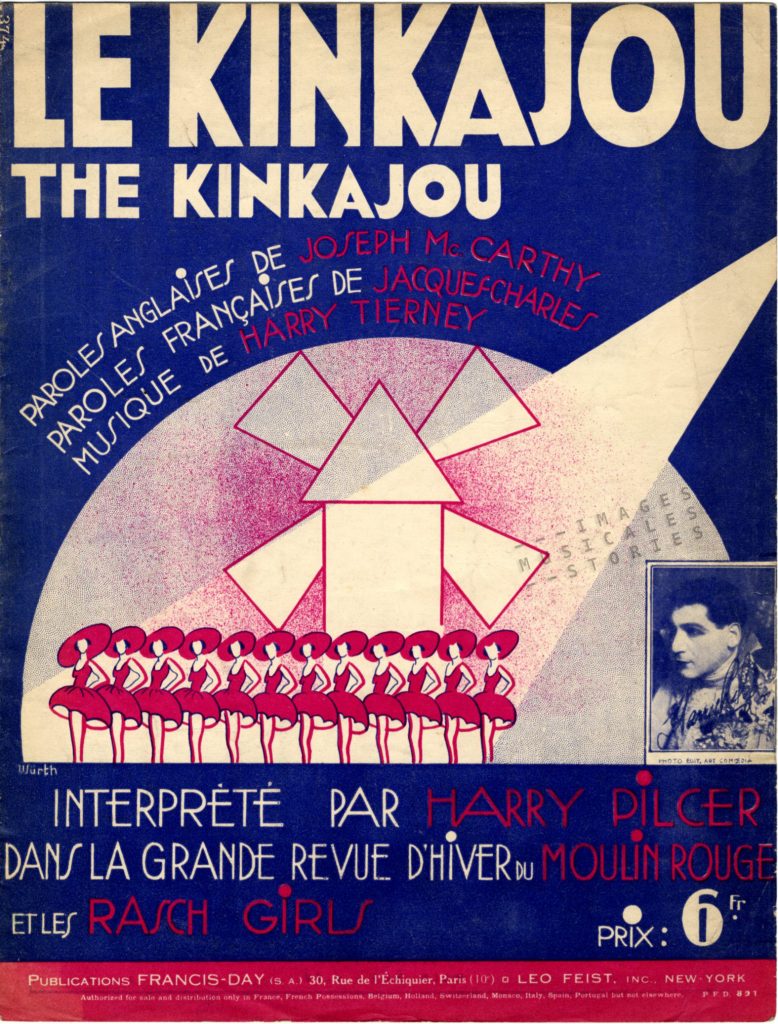


It was Albertina Rasch, leader of her own troupe The Albertina Rasch Girls, who choreographed the Kinkajou for the original Ziegfeld production on Broadway. The Albertina Rasch Girls also performed the Kinkajou dance routine at the Moulin Rouge in Paris, together with Harry Pilcer.
Strangely, at exactly the same period Publications Francis-Day edited another version of the Kinkajou sheet music, also by Würth. This time Würth chose not the stage of the Moulin Rouge as the central theme, but drew a highly stylised close-up portrait of the two main actors.
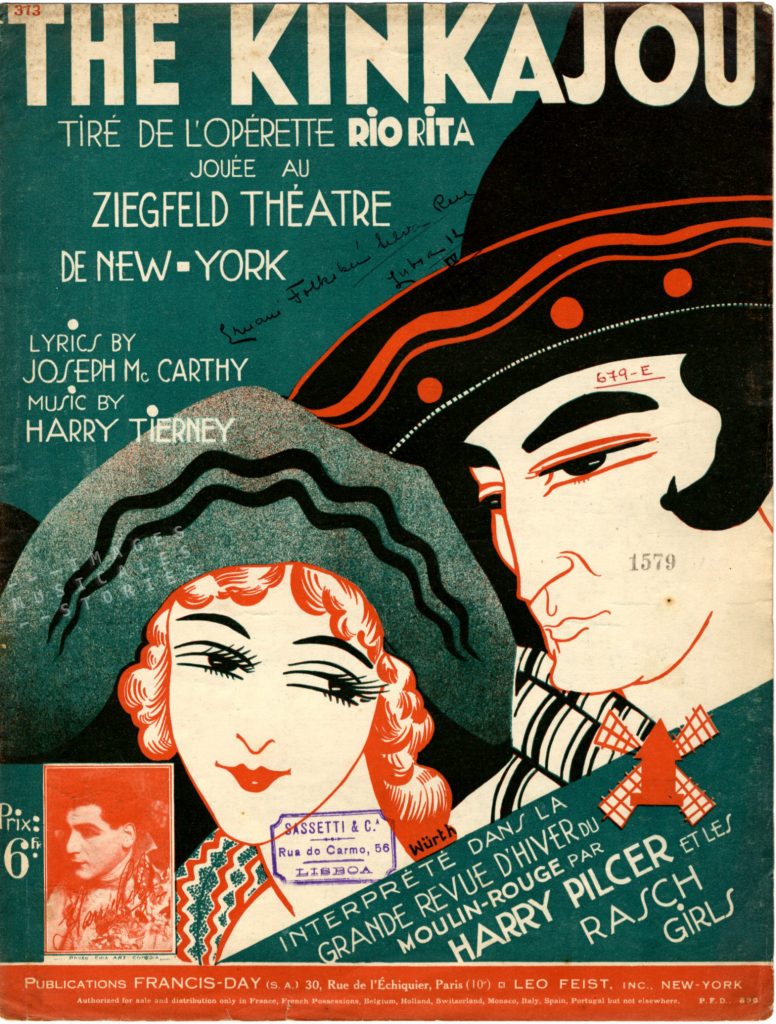
Also in 1927 Paddy & Zez Confrey composed The Black Kinkajou. Although the manager of the Irvin Sisters insisted they had nothing to learn from a dance teacher and that they could very well invent their dance routines themselves, it was Jean Mesnard who choreographed the dance moves that were presented by the Irvin Sisters at the Concert Mayol in Paris.
A lot of quarreling for nothing, because the Kinkajou was never really succesful…
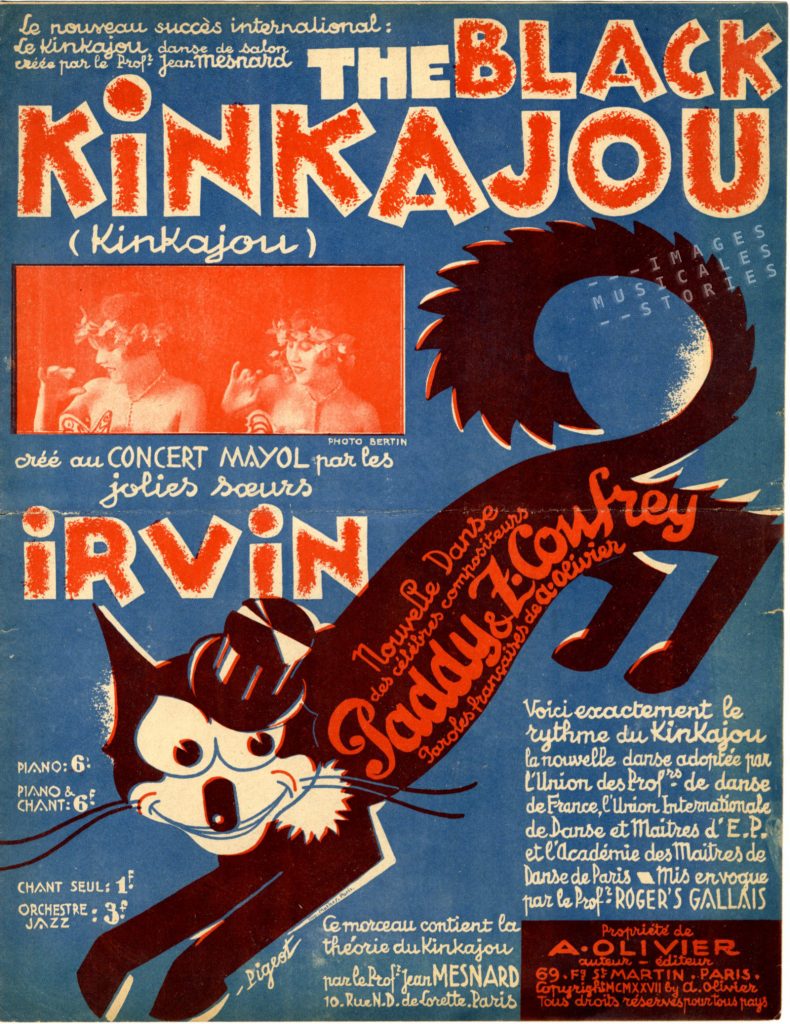
Pigeot, the illustrator of The Black Kinkajou had presumably never heard of a kinkajou and thought a drawing of a cat might do as well.
In 1929 the stage musical Rio Rita was made into a film. A rare excerpt with the Kinkajou dance routine made it to YouTube.



